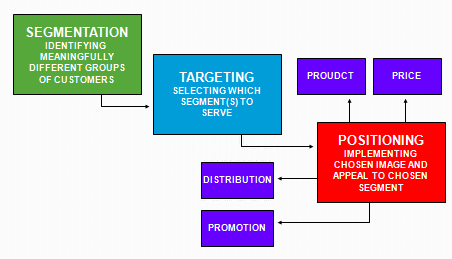Segmentation, targeting, and positioning together comprise a three stage process.
We first
(1) determine which kinds of customers exist, then
(2) select which ones we are best off trying to serve and, finally,
(3) implement our segmentation by optimizing our products/services for that segment and communicating that we have made the choice to distinguish ourselves that way.

For Duracell, the marketing issue is what market coverage strategy should they use in the consumer battery market. To answer this question a company can construct a "segmentation circle" that represents the possible ways that a market can be segmented such that each possible segment is or can be a product that meets separate needs and wants. (Note: if not separate, cannibalization can and probably will occur.)
Consumer segmentation variables include demographics (e.g., age, gender and family life cycle), psychographics (e.g., self concept and lifestyle), usage rate (e.g., heavy and light users) and benefits sought. In this case benefits sought may be batteries for normal vs. high-drain devices.
A company has three basic choices for market coverage strategy:
- Undifferentiated – ignore segmentation variables and go after the whole market with one brand.
- Differentiated – operate in all or several segments of the market and design separate brands for each.
- Concentrated – operate in one or only a few segments of the larger market following a niche strategy with one brand.
For years Duracell and its competitors in the consumer battery market followed undifferentiated market coverage strategies. There was only the Duracell brand name and the company wanted to sell those batteries to everyone in the market. However, Duracell switched to a differentiated market coverage strategy by bringing out a new product line called Duracell Ultra (for high-drain devices). The success of this strategy depends on how well Duracell did their segmentation analysis—the segmentation circle—since that is what defines how different the two markets really are. If they are not different, the new product could cannibalize the existing product or, worse, dilute the meaning of the brand in the minds of consumers.


No comments:
Post a Comment